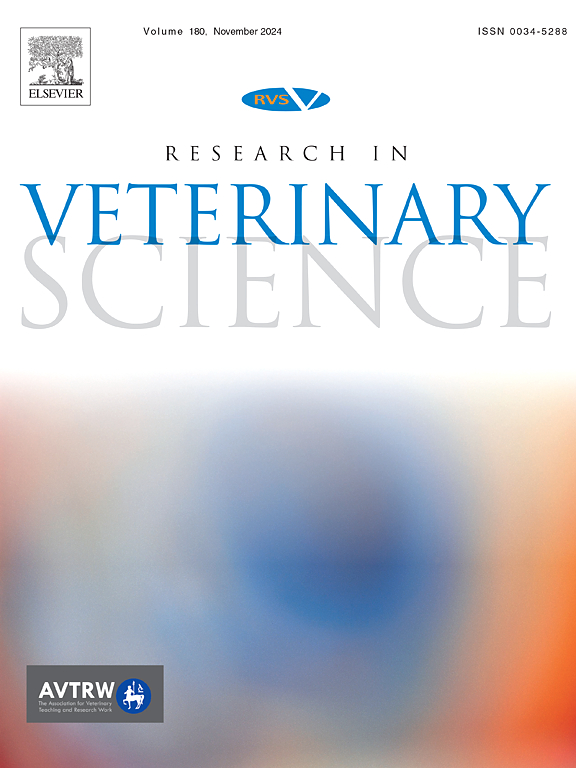Fecal carriage of extended-spectrum β-lactamase-, AmpC β-lactamase- and carbapenemase-producing Escherichia coli in stray cats in Italy
IF 2.2
3区 农林科学
Q1 VETERINARY SCIENCES
引用次数: 0
Abstract
The spread of carbapenem-resistant bacteria is a global threat to public health and the role of pets in the rise in antimicrobial resistance is gaining attention worldwide. This study aimed to determine the fecal carriage of extended-spectrum β-lactamase (ESBL)-, AmpC- and carbapenemase (CP)-producing E. coli and associated risk factors in healthy and unhealthy stray cats admitted to the Veterinary Teaching Hospital of Lodi, University of Milan, Italy. Fecal samples collected in, 2020–2022 were microbiologically and molecularly analyzed. Overall, ESBL-/AmpC-/CP-producing E. coli were detected in 18/94 (19.1 %) stray cats. Twelve (12.8 %), 4 (4.3 %) and 7 (7.4 %) stray cats carried ESBL-, AmpC- and CP-producing E. coli phenotypes respectively, supported by the detection of blaCTX-M in all ESBL-producing E. coli, blaCMY-2 in all AmpC-producing E. coli and blaNDM (4/7; 57.1 %) or blaOXA-48 (3/7; 42.9 %) genes in CP-producing E. coli. Multiple combination of resistance genes and phenotypes were detected. MIC results showed that all E. coli were multidrug resistant isolates. Risk factors associated with ESBL-, AmpC- and/or CP-producing E. coli fecal carriage were hospitalization (P < 0.0001), antibiotic treatment during hospitalization (P < 0.0001) and unhealthy status (P < 0.0001). Fecal carriage of CP-producing E. coli is of concern and highlights the need of specific surveillance programs for CP-producing Enterobacteriaceae and antimicrobial stewardship in stray cats to reduce the emergence and spread of resistant bacteria. Limitations of this study suggest a One Health approach to characterize the whole genome of the isolates and the epidemiology of AMR bacteria among stray cats, including additional bacterial species and the environment.
求助全文
约1分钟内获得全文
求助全文
来源期刊

Research in veterinary science
农林科学-兽医学
CiteScore
4.40
自引率
4.20%
发文量
312
审稿时长
75 days
期刊介绍:
Research in Veterinary Science is an International multi-disciplinary journal publishing original articles, reviews and short communications of a high scientific and ethical standard in all aspects of veterinary and biomedical research.
The primary aim of the journal is to inform veterinary and biomedical scientists of significant advances in veterinary and related research through prompt publication and dissemination. Secondly, the journal aims to provide a general multi-disciplinary forum for discussion and debate of news and issues concerning veterinary science. Thirdly, to promote the dissemination of knowledge to a broader range of professions, globally.
High quality papers on all species of animals are considered, particularly those considered to be of high scientific importance and originality, and with interdisciplinary interest. The journal encourages papers providing results that have clear implications for understanding disease pathogenesis and for the development of control measures or treatments, as well as those dealing with a comparative biomedical approach, which represents a substantial improvement to animal and human health.
Studies without a robust scientific hypothesis or that are preliminary, or of weak originality, as well as negative results, are not appropriate for the journal. Furthermore, observational approaches, case studies or field reports lacking an advancement in general knowledge do not fall within the scope of the journal.
 求助内容:
求助内容: 应助结果提醒方式:
应助结果提醒方式:


